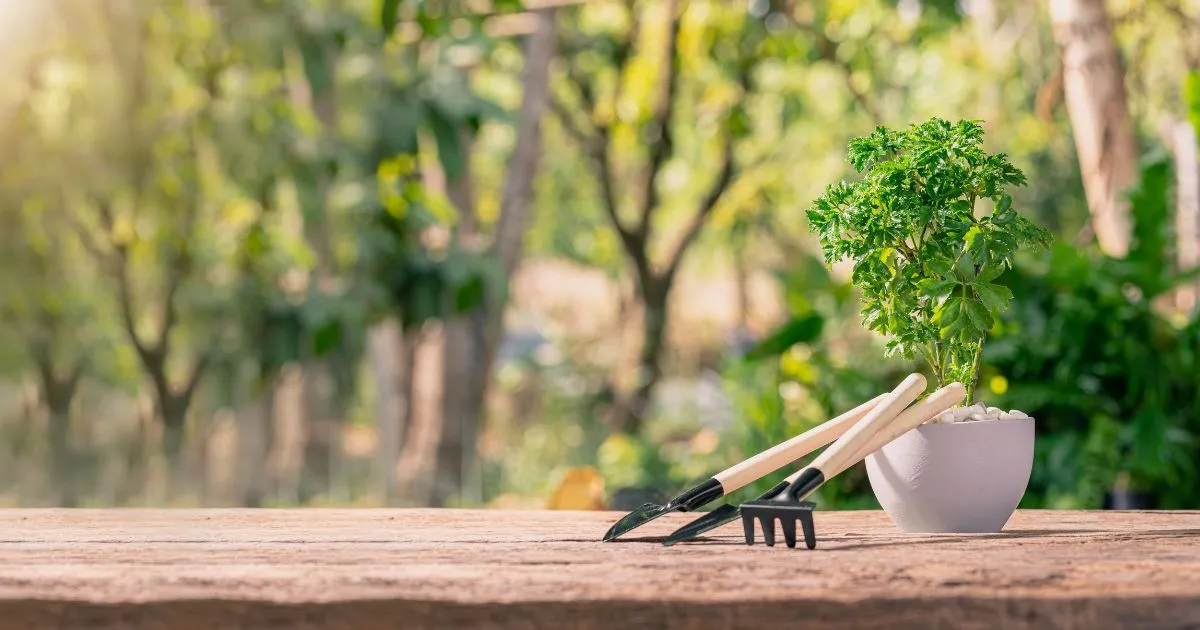Table of Contents
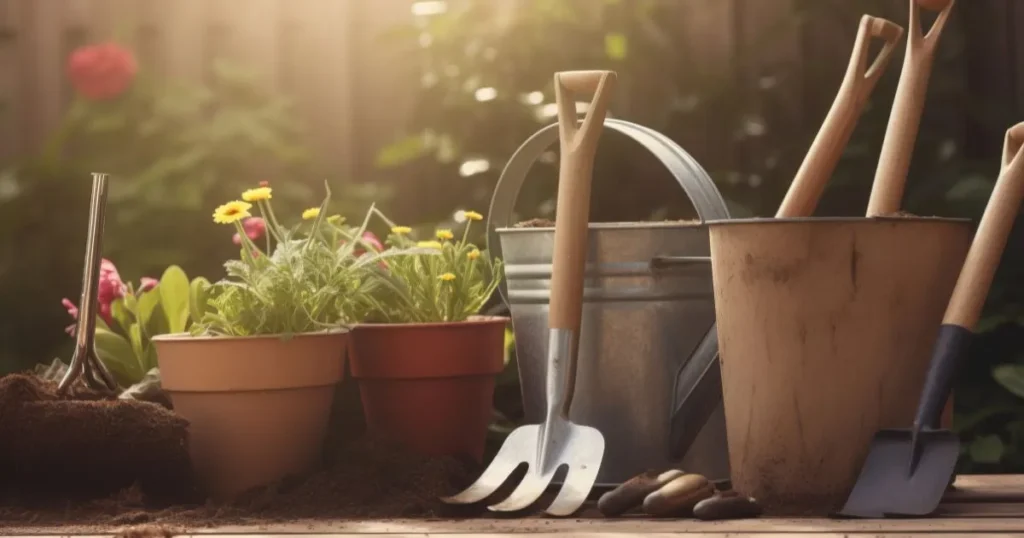
Gardening is a rewarding and therapeutic activity that allows individuals to connect with nature, grow their own food, and create beautiful outdoor spaces. However, to achieve success in gardening, having the right gardening tools is essential. Whether you’re a beginner or an experienced gardener, understanding the purpose and proper use of these tools can make a significant difference in your gardening experience. In this article, we’ll explore the various types of gardening tools, their uses, and tips for maintaining them.
Why Are Gardening Tools Important?
Gardening tools are the backbone of any successful gardening endeavor. They help you perform tasks efficiently, save time, and reduce physical strain. From preparing the soil to planting, pruning, and harvesting, each tool has a specific role to play. Without the right gardening tools, even the simplest tasks can become challenging and time-consuming.
Gardening tools not only make your work easier but also ensure that your plants receive the care they need to thrive. For example, using the right pruning shears can help you make clean cuts that promote healthy plant growth, while a sturdy spade can make digging and planting much more manageable.
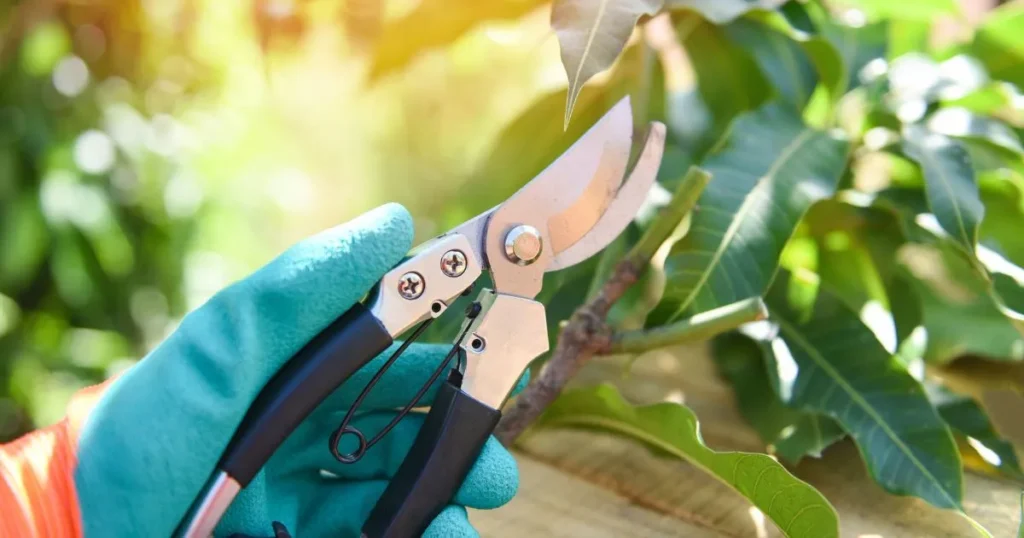
Essential Gardening Tools for Every Gardener
1. Hand Trowel
A hand trowel is one of the most versatile and commonly used gardening tools. It’s perfect for digging small holes, transplanting seedlings, and removing weeds. Look for a trowel with a comfortable grip and a sturdy stainless steel blade to ensure durability.
How to Use a Hand Trowel
- Dig small holes for planting bulbs or seedlings.
- Scoop soil or compost into pots.
- Remove weeds by digging around their roots.
Choosing the Right Hand Trowel
When selecting a hand trowel, consider the size of your hands and the type of gardening you’ll be doing. A smaller trowel is ideal for delicate tasks, while a larger one is better for heavier digging.
2. Pruning Shears
Pruning shears, also known as secateurs, are essential for maintaining the health and appearance of your plants. They are used to trim branches, deadhead flowers, and shape shrubs.
Types of Pruning Shears
- Bypass Pruners: Ideal for live plants and clean cuts.
- Anvil Pruners: Best for dead branches and thicker stems.
How to Use Pruning Shears
- Make clean cuts at a 45-degree angle to promote healing.
- Regularly clean and oil the blades to prevent rust and ensure smooth operation.
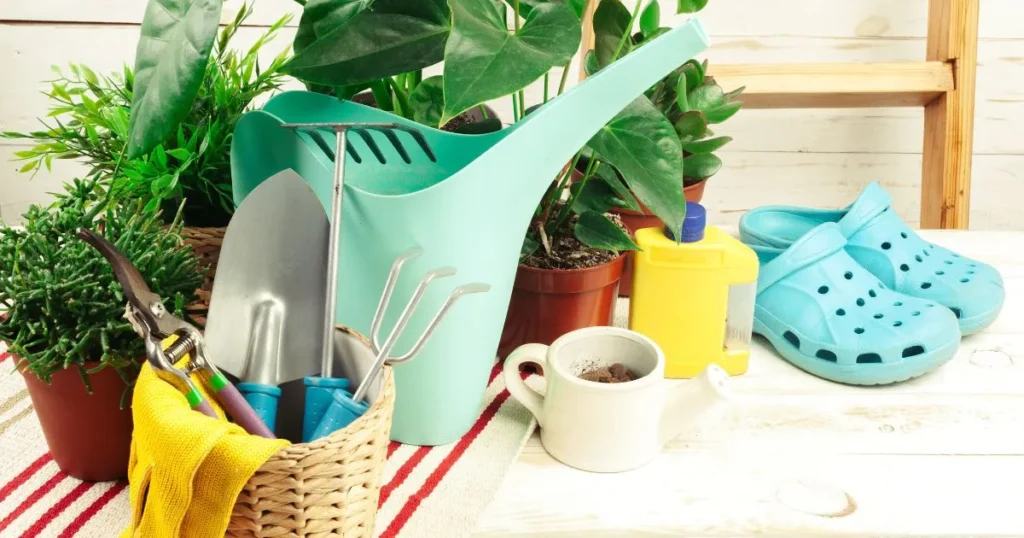
3. Garden Fork
A garden fork is a must-have tool for turning soil, aerating compost, and breaking up clumps of dirt. Its sturdy tines make it easier to work with heavy or compacted soil.
How to Use a Garden Fork
- Loosen and aerate soil before planting.
- Mix compost or fertilizer into the soil.
- Break up hard soil clumps.
Choosing the Right Garden Fork
Look for a garden fork with strong, durable tines and a comfortable handle. A fork with a D-shaped handle can provide better grip and control.
4. Spade
A spade is a flat-bladed gardening tool used for digging, edging, and moving soil. It’s particularly useful for creating clean edges around garden beds and planting trees or shrubs.
Tips for Using a Spade
- Use your foot to apply pressure on the blade for deeper digging.
- Keep the blade sharp for easier cutting through roots and soil.
Choosing the Right Spade
Select a spade with a sturdy blade and a comfortable handle. A spade with a longer handle can provide better leverage for digging.
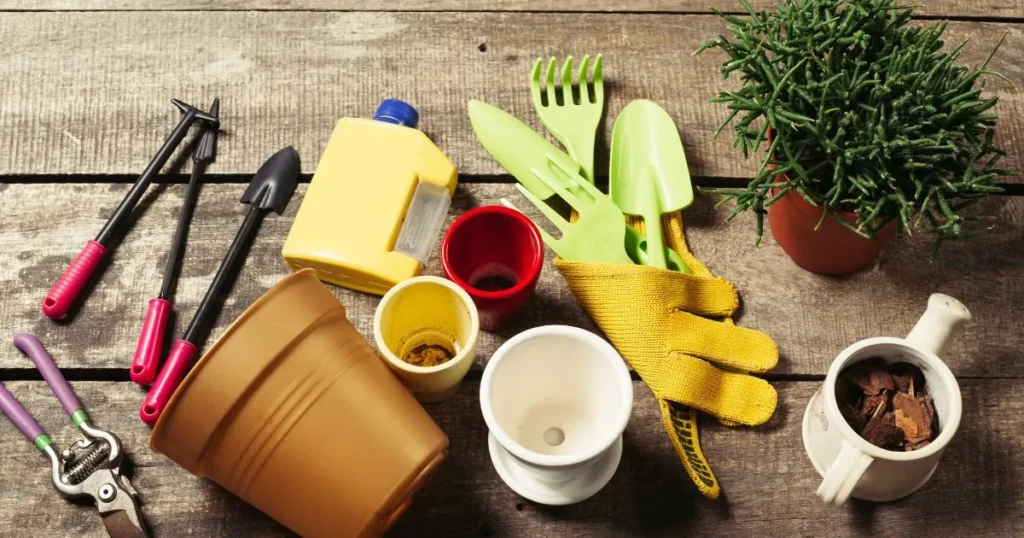
5. Rake
Rakes are essential for clearing leaves, debris, and leveling soil. There are different types of rakes, including leaf rakes and garden rakes, each designed for specific tasks.
Types of Rakes
- Leaf Rake: Lightweight and designed for gathering leaves.
- Garden Rake: Heavy-duty and used for leveling soil or spreading mulch.
How to Use a Rake
- Use a leaf rake to gather leaves and debris.
- Use a garden rake to level soil or spread mulch evenly.
6. Hoe
A hoe is a versatile gardening tool used for weeding, cultivating soil, and creating furrows for planting seeds.
Types of Hoes
- Draw Hoe: Ideal for pulling soil towards you.
- Stirrup Hoe: Perfect for slicing weeds just below the soil surface.
How to Use a Hoe
- Use a draw hoe to cultivate soil and create furrows.
- Use a stirrup hoe to slice weeds at the root level.
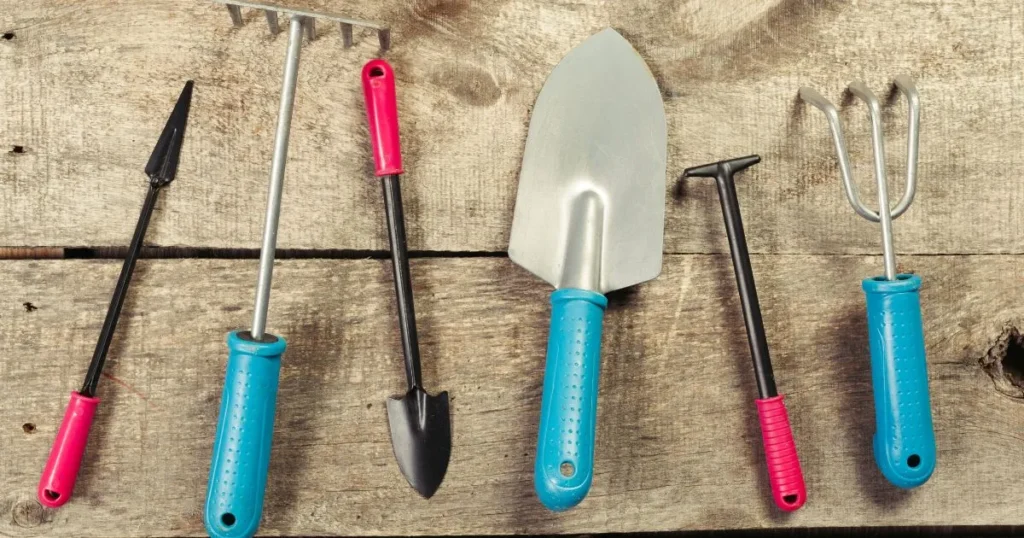
7. Watering Can or Hose
Proper watering is crucial for plant health, and having the right watering tools is essential. A watering can is ideal for small gardens or potted plants, while a hose with a spray nozzle is better for larger areas.
Tips for Watering
- Water plants early in the morning or late in the evening to reduce evaporation.
- Use a watering can with a fine rose for delicate seedlings.
Choosing the Right Watering Tool
Select a watering can with a comfortable handle and a removable rose for adjustable water flow. For hoses, choose one with a durable nozzle and adjustable spray settings.
8. Wheelbarrow
A wheelbarrow is a valuable gardening tool for transporting soil, compost, plants, and other heavy materials. It saves time and reduces physical strain.
How to Choose a Wheelbarrow
- Opt for a sturdy frame and durable wheels.
- Consider the size based on your gardening needs.
Using a Wheelbarrow
- Load the wheelbarrow evenly to maintain balance.
- Use it to transport heavy materials like soil, compost, and plants.
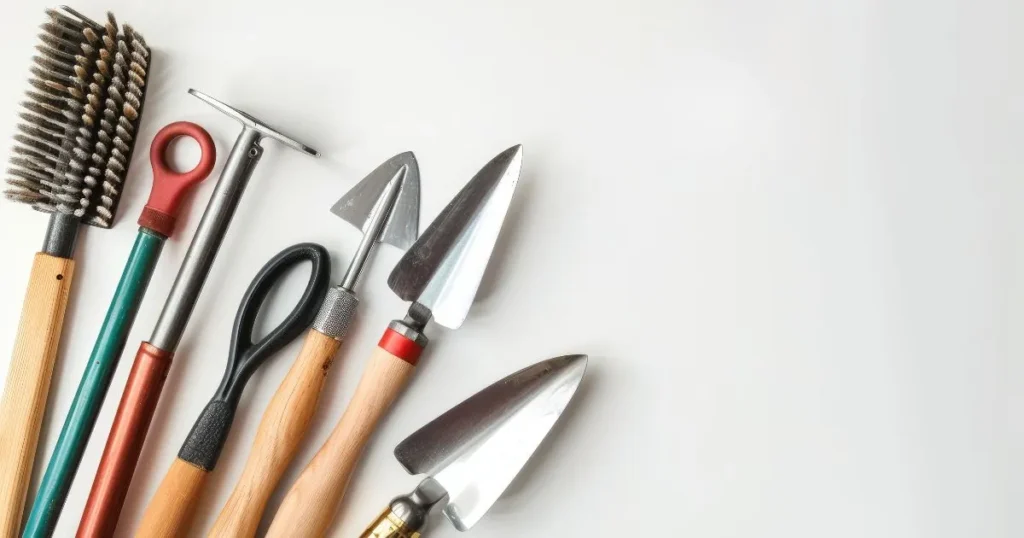
9. Gloves
Gardening gloves protect your hands from thorns, blisters, and dirt. They are an essential accessory for any gardener.
Types of Gardening Gloves
- Leather Gloves: Durable and ideal for heavy-duty tasks.
- Rubber Gloves: Waterproof and great for wet tasks.
Choosing the Right Gloves
Select gloves that fit well and provide adequate protection for the tasks you’ll be performing. Breathable gloves are ideal for hot weather, while waterproof gloves are better for wet conditions.
10. Pruning Saw
For thicker branches that pruning shears can’t handle, a pruning saw is the perfect gardening tool. It’s designed to cut through dense wood with ease.
How to Use a Pruning Saw
- Make clean cuts to avoid damaging the plant.
- Use a saw with a comfortable handle for better control.
Choosing the Right Pruning Saw
Look for a pruning saw with a sharp blade and a comfortable handle. Folding saws are convenient for easy storage and transport.
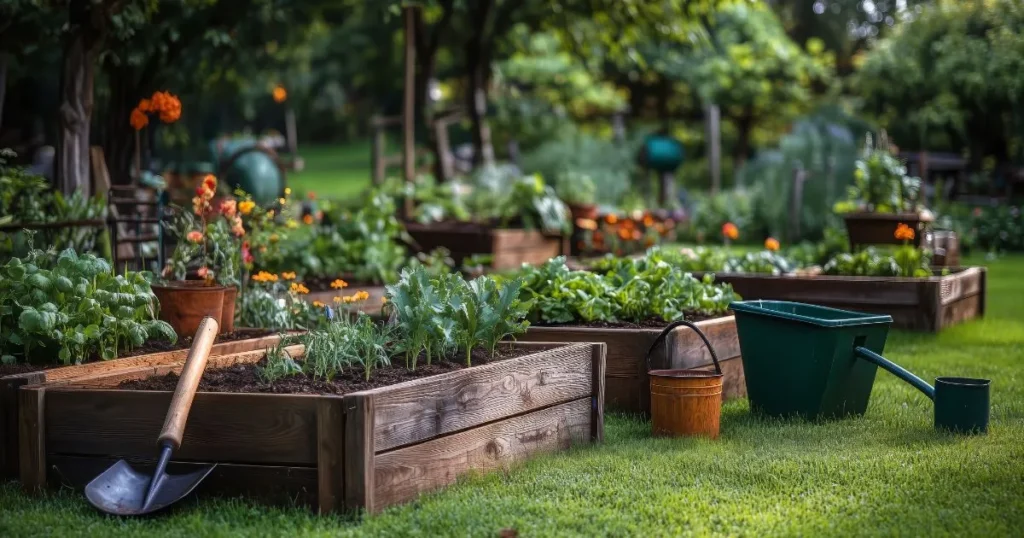
Maintaining Your Gardening Tools
Proper maintenance of your gardening tools ensures their longevity and optimal performance. Here are some tips:
Cleaning
- Remove dirt and debris after each use.
- Wash metal parts with soapy water and dry thoroughly to prevent rust.
Sharpening
- Regularly sharpen blades of pruners, shears, and spades.
- Use a sharpening stone or file for best results.
Storage
- Store tools in a dry, sheltered area.
- Hang tools or use a tool rack to keep them organized.
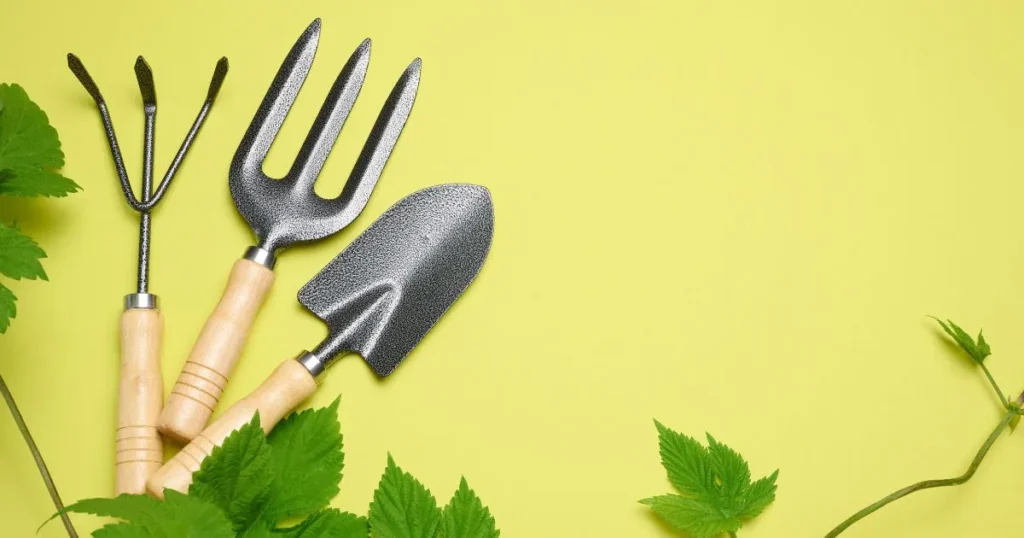
Conclusion
Gardening tools are indispensable for anyone who enjoys spending time in the garden. From hand trowels and pruning shears to wheelbarrows and watering cans, each tool plays a vital role in making gardening tasks easier and more efficient. By investing in high-quality gardening tools and maintaining them properly, you can ensure a successful and enjoyable gardening experience.
FAQs About Gardening Tools
1. What are the most essential gardening tools for beginners?
For beginners, the most essential gardening tools include a hand trowel, pruning shears, garden fork, spade, rake, and watering can.
2. How often should I clean my gardening tools?
It’s best to clean your gardening tools after every use to prevent dirt buildup and rust.
3. Can I use regular gloves for gardening?
While regular gloves can be used, it’s recommended to use gardening gloves as they are designed to provide better protection and grip.
4. How do I sharpen my pruning shears?
Use a sharpening stone or file to sharpen the blades of your pruning shears. Make sure to follow the angle of the blade for a precise edge.
5. What’s the difference between a spade and a shovel?
A spade has a flat blade and is used for digging and edging, while a shovel has a curved blade and is designed for scooping and moving materials.
6. How do I choose the right watering can?
Choose a watering can based on the size of your garden. A smaller can is ideal for potted plants, while a larger can is better for bigger gardens.
By understanding and using the right gardening tools, you can transform your gardening experience and achieve beautiful, thriving gardens. Happy gardening!

